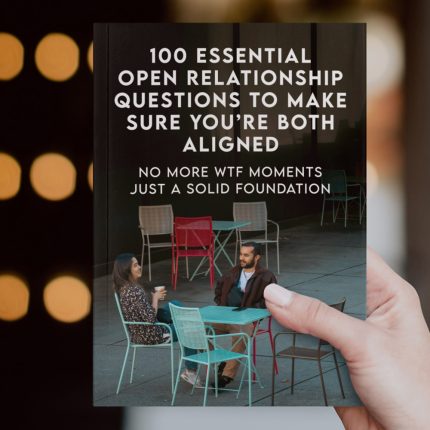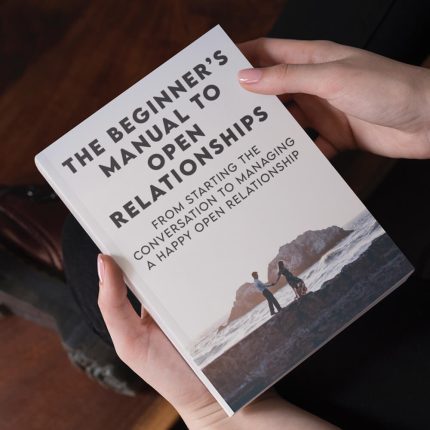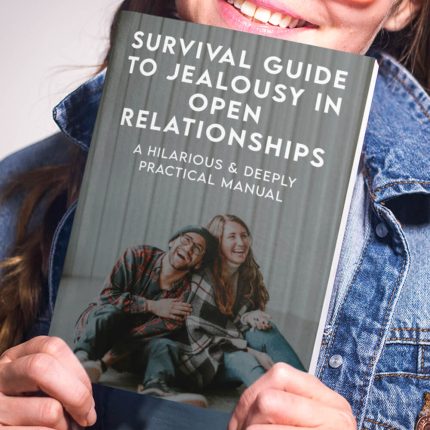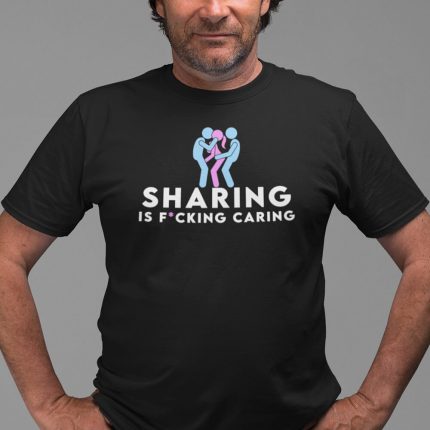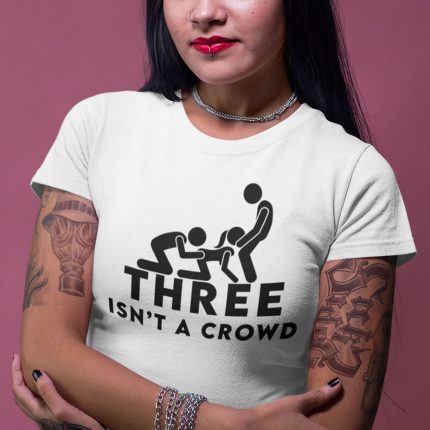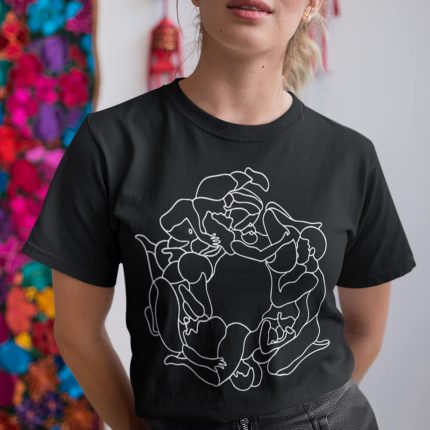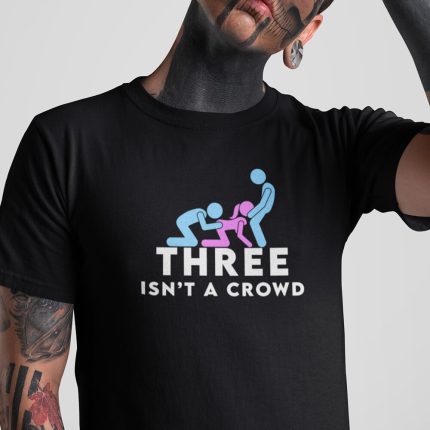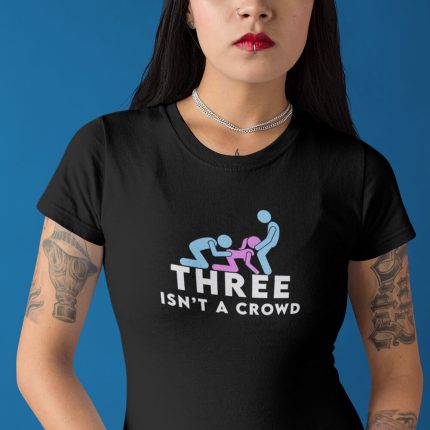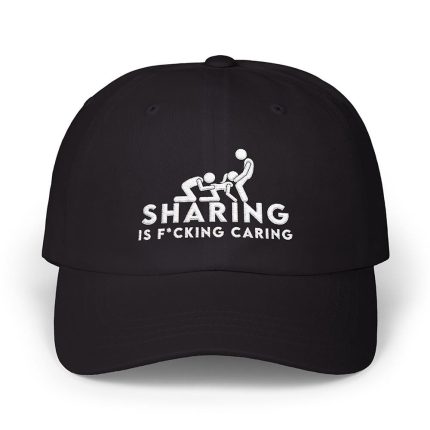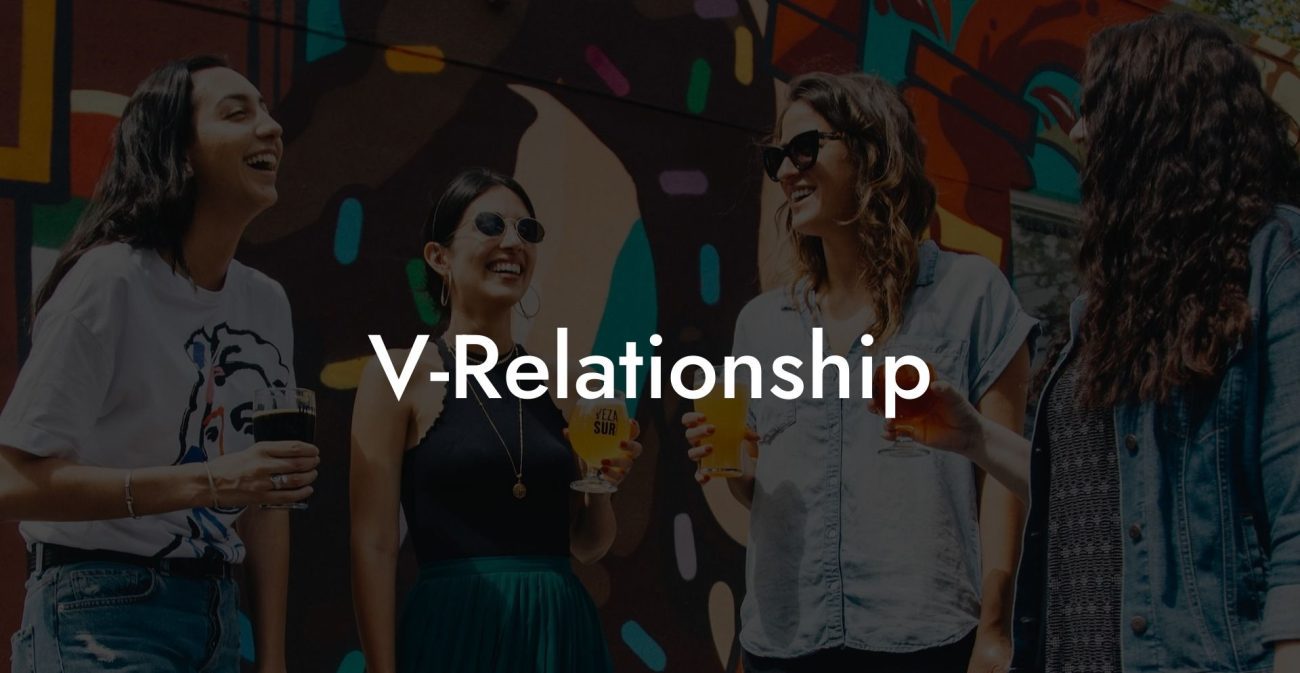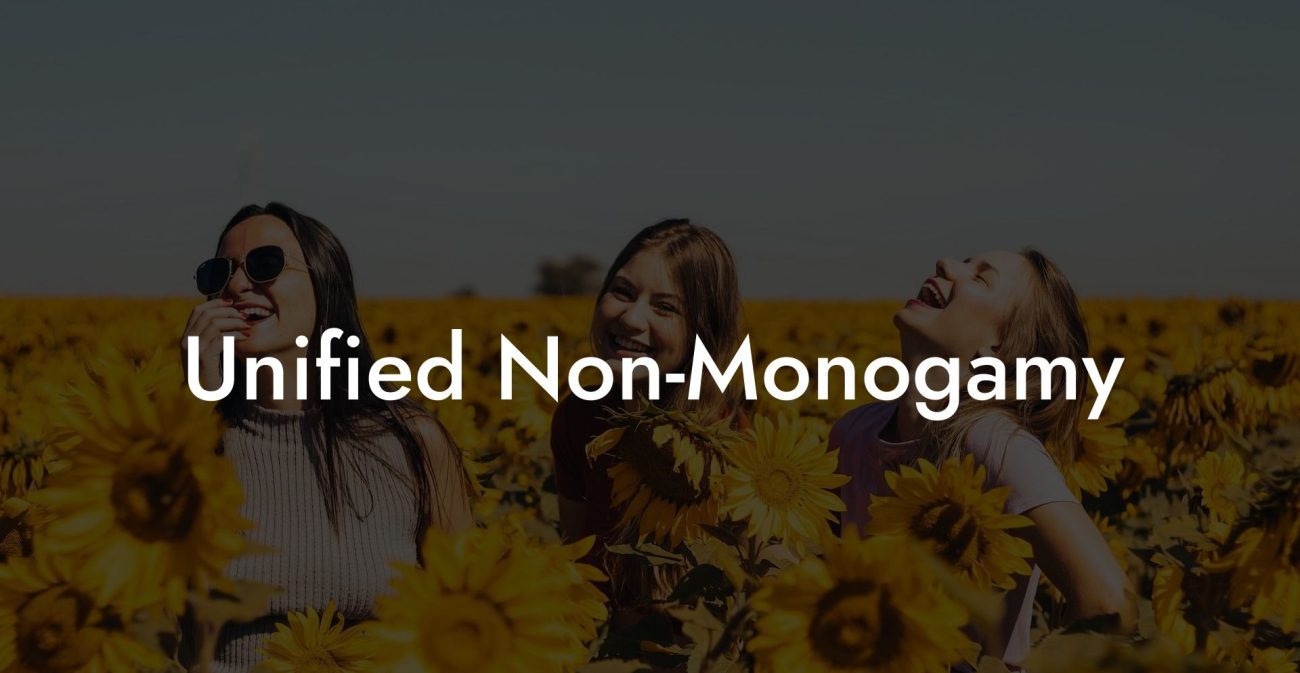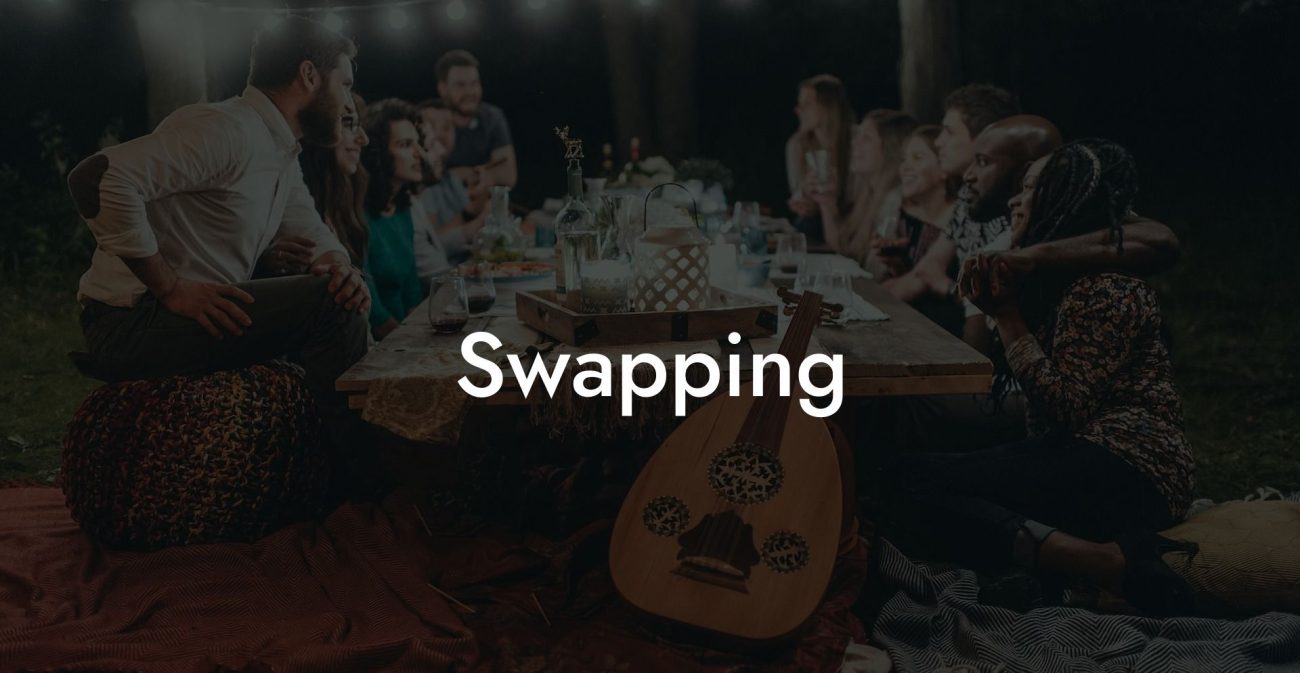Love Spectrum
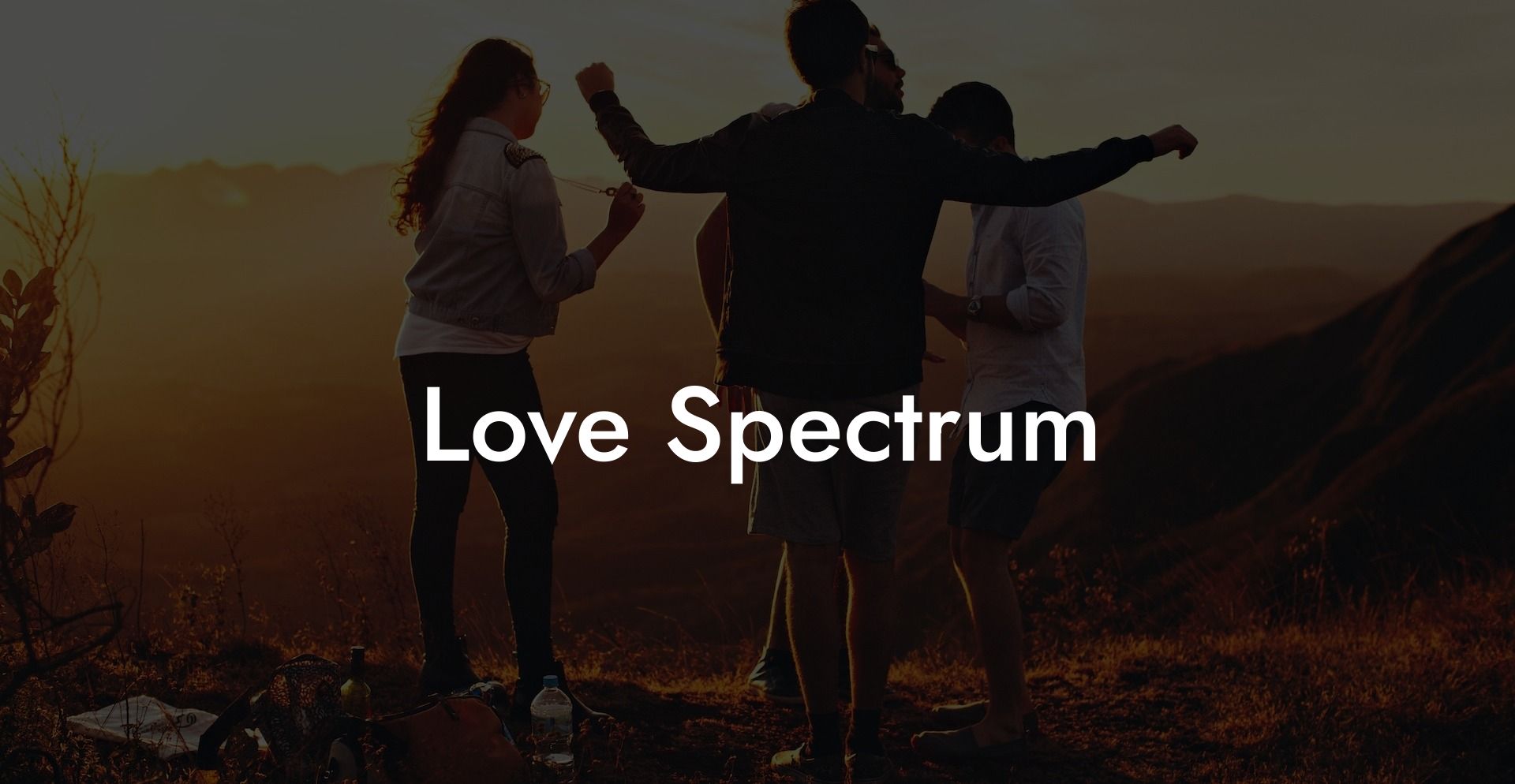
Imagine love not as a single note or a monochrome painting, but as a dazzling spectrum of colors—each shade representing a unique way of connecting and experiencing intimacy. Welcome to Love Spectrum, a transformative concept in ethical non monogamy that redefines the boundaries of connection. In this vision, love is seen as a range of vibrant possibilities rather than a single, static state. Whether you're drawn to soft pastels of gentle affection or the bold, neon hues of passionate intensity, Love Spectrum invites you to explore every nuance of your emotional landscape.
Have you ever wondered if monogamy is just a stupid little experiment? Open relationships, polyamory, relationship anarchy...find out which relationship dynamic suits you best with our one minute relationship test. See if you are just conforming to "societal norms". Reveal your truth >>
Quick Links to Useful Sections
- The Ethical Non Monogamy Term: Love Spectrum
- What Is Love Spectrum?
- Core Principles of Love Spectrum
- Historical and Cultural Perspectives on Love Spectrum
- From Singular Ideals to a Rainbow of Possibilities
- Cultural Shifts in Modern Love
- Everyday Dynamics of Love Spectrum
- Living Out the Full Range of Your Emotions
- Renegotiating Boundaries as Your Emotions Evolve
- Benefits of Embracing Love Spectrum
- Deepened Emotional Connections
- Personal Growth and Empowerment
- Improved Communication and Conflict Resolution
- Collective Resilience and Support
- Challenges of Love Spectrum
- Managing Emotional Complexity
- Balancing Individual Autonomy with Collective Connection
- Adapting to Continuous Change
- Navigating External Judgment
- Frequently Asked Questions (FAQ)
- Resources and Community Support: Your Next Steps
The Ethical Non Monogamy Term: Love Spectrum
What Is Love Spectrum?
Love Spectrum is the idea that love exists as a continuum of diverse emotional expressions and relational dynamics. In ethical non monogamy, it suggests that your capacity to love can manifest in multiple forms at once—each relationship or connection adds a different color to your overall experience. This approach challenges the notion of love as an all-or-nothing phenomenon and instead embraces the beauty of variability, fluidity, and coexistence of contrasting emotions.
In practice, Love Spectrum means recognizing that no single definition of love can capture its full range. It might mean experiencing both tender, nurturing moments with one partner and high-energy, passionate encounters with another—all while remaining authentic to your core self. Love Spectrum celebrates this multifaceted nature, encouraging you to appreciate the spectrum of emotional, physical, intellectual, and even spiritual connections in your life.
Core Principles of Love Spectrum
- Multiplicity of Expression: Love isn’t one-size-fits-all. Embrace the variety of ways you can experience and express love, from gentle care to fiery passion.
- Fluidity of Connection: Your feelings and relationships can shift over time—what once was soft may intensify or blend into new hues, and that evolution is natural and beautiful.
- Holistic Integration: Each relationship contributes to your overall emotional palette, creating a rich, complex picture of who you are and what you need.
- Inclusive Communication: Honest, open dialogue about needs, boundaries, and desires ensures that every part of your Love Spectrum is acknowledged and valued.
- Mutual Empowerment: Every connection has the power to uplift you, and in turn, your unique way of loving enriches the lives of those around you.
- Adaptability: Embrace change and be willing to adjust your approach as you discover new aspects of love within yourself and your relationships.
Historical and Cultural Perspectives on Love Spectrum
From Singular Ideals to a Rainbow of Possibilities
For much of history, cultural narratives have idealized love as a singular, exclusive bond—a pristine, unchanging union. Traditional monogamy often promoted the idea that there was only one "true" way to love, leaving little room for the diversity of human emotions. However, as social movements like the sexual revolution, feminist activism, and the emergence of polyamory began to challenge these outdated ideas, people started to realize that love could be as varied and colorful as a rainbow.
EXPLORE OUR ETHICAL NON-MONOGAMY & OPEN RELATIONSHIP SHOP
👨💻👩💻 Digital Store (Instant Download)
🍆💦 Clothing Store (Worldwide Delivery Available)
Sharing Is Caring Unisex T-Shirt (Black)
$29.99Three Isn't a Crowd Unisex T-Shirt (White)
$29.99It's Not Cheating If He Watches T-Shirt (Black)
$29.99Fuck Each Other Not The Planet Unisex T-Shirt (White)
$29.99Multiple Lovers - Sharing Is Caring Unisex T-Shirt (Black)
$29.99Three Isn't a Crowd Unisex T-Shirt (Black)
$29.99Real Men Share Pop Art T-Shirt (White)
$29.99I Love Watching Pop Art T-Shirt (Black)
$29.99Sharing Is Caring Daddy Cap (Black)
$39.99I Love Watching Pop Art T-Shirt (White)
$29.99Fuck Each Other Not The Planet Unisex T-Shirt (Black)
$29.99Real Men Share Pop Art T-Shirt (Black)
$29.99Early proponents of ethical non monogamy observed that individuals often experience love in multiple forms simultaneously. They began to articulate a vision of love that was not limited by exclusivity, but rather enriched by the coexistence of different emotional expressions. This paved the way for the concept of Love Spectrum, where every relationship, regardless of its intensity or duration, adds a unique hue to your overall experience of intimacy.
Cultural Shifts in Modern Love
In today’s interconnected world, the idea of Love Spectrum resonates strongly—especially among Millennials and Gen-Z, who value diversity, fluidity, and authenticity in their relationships. Social media, blogs, and podcasts have amplified voices that celebrate multiple forms of love, challenging the narrow confines of traditional romance.
Modern narratives now emphasize that love can be abundant and multifaceted. Rather than competing for a finite amount of affection, ethical non monogamy advocates for the expansion of love as a resource that grows with each genuine connection. Love Spectrum embodies this shift, inviting individuals to view their emotional lives as a kaleidoscope of experiences that enrich and empower them.
Everyday Dynamics of Love Spectrum
Living Out the Full Range of Your Emotions
In practical terms, embracing Love Spectrum means allowing yourself to experience and express the full range of your emotions—without guilt or constraint. This might look like the following:
- Daily Emotional Check-Ins: Take time each day to reflect on your mood and feelings. Journaling or meditation can help you identify which colors are dominant in your emotional palette at any given moment.
- Open Dialogues: Engage in regular, honest conversations with your partners about your changing feelings. Discuss what aspects of your connection feel nurturing versus those that ignite passion, and celebrate these differences.
- Creative Expression: Use art, music, or writing as a way to capture your evolving emotional state. Create visual representations of your Love Spectrum to see how each relationship contributes to your overall mosaic.
- Flexible Relationship Practices: Be willing to experiment with different forms of connection—whether it’s planning a quiet night in, embarking on an adventurous date, or exploring intellectual or spiritual discussions.
Renegotiating Boundaries as Your Emotions Evolve
As your emotional landscape shifts, so too should your relationship boundaries. Love Spectrum requires you to remain adaptable, continuously reviewing and adjusting your boundaries to ensure that every connection remains healthy and fulfilling.
- Regular Boundary Reviews: Schedule periodic discussions with your partners to assess and update your personal and collective boundaries.
- Feedback Loops: Create mechanisms for ongoing feedback that allow everyone to express how their needs are evolving and to negotiate adjustments as necessary.
Benefits of Embracing Love Spectrum
Deepened Emotional Connections
Embracing Love Spectrum allows you to build a rich, multilayered network of relationships. Each connection, with its unique emotional signature, contributes to a more comprehensive and satisfying experience of love.
- Layered Intimacy: Multiple forms of connection create depth and complexity, making your emotional bonds more resilient.
- Enhanced Empathy: Experiencing love in its many forms helps you understand both your own emotions and those of your partners, fostering greater empathy and mutual support.
Personal Growth and Empowerment
Love Spectrum encourages continuous self-discovery by challenging you to embrace all aspects of your emotional being. This journey of exploration can lead to profound personal growth.
- Increased Self-Awareness: Regular reflection on your emotional experiences helps you understand your true desires, triggers, and areas for growth.
- Empowerment Through Diversity: Recognizing and valuing the many forms of love in your life reinforces your belief in the limitless nature of your heart, boosting your confidence and resilience.
Improved Communication and Conflict Resolution
Open dialogue is essential for managing a diverse emotional landscape. By communicating openly about your feelings, you create a safe space for resolving conflicts and building mutual understanding.
- Proactive Check-Ins: Regular, honest conversations help prevent misunderstandings and address issues before they escalate.
- Constructive Feedback: Continuous dialogue fosters a culture of empathy and constructive conflict resolution, strengthening your overall relationships.
Collective Resilience and Support
When your love is viewed as a spectrum, every relationship—regardless of its form—contributes to a robust support network. This collective resilience ensures that you have multiple sources of strength during challenging times.
- Shared Support: The diversity of your connections creates a safety net that provides emotional support, practical assistance, and encouragement during tough moments.
- Unified Growth: As each relationship evolves, the collective network becomes stronger, offering continuous opportunities for shared learning and mutual empowerment.
Challenges of Love Spectrum
Managing Emotional Complexity
With a vast array of connections comes a complex emotional landscape that can sometimes feel overwhelming. Balancing different emotional needs and expressions requires continuous effort.
- Tip: Engage in regular self-reflection and journaling to process your emotions and maintain clarity about your needs.
- Tip: Schedule routine check-ins with your partners to ensure that every relationship is nurtured and that boundaries are adjusted as needed.
Balancing Individual Autonomy with Collective Connection
Ensuring that your personal needs are met while contributing to a broader network of love can be challenging. Conflicts may arise when individual desires diverge from the overall collective vision.
- Tip: Use open, honest dialogue to negotiate boundaries that honor both personal autonomy and collective support.
- Tip: Practice empathy and actively listen to your partners’ perspectives to create a balanced approach to intimacy.
Adapting to Continuous Change
Love Spectrum is inherently dynamic—your emotional needs and relationships are always evolving. Adapting to these changes requires flexibility and the willingness to continuously renegotiate your boundaries.
- Tip: Embrace change as a natural and positive part of your emotional journey, and view each adjustment as a step toward deeper connection.
- Tip: Regularly revisit your relationship agreements and make iterative changes to keep your network aligned with your current self.
Navigating External Judgment
Despite progressive cultural shifts, traditional societal expectations may still challenge your embrace of Love Spectrum. External criticism can sometimes lead to self-doubt or the pressure to conform to more conventional models.
- Tip: Build a supportive community of like-minded individuals who celebrate diverse expressions of love.
- Tip: Focus on your personal growth and the enriching value of your diverse connections, rather than on negative external opinions.
Frequently Asked Questions (FAQ)
1. What is Love Spectrum in ethical non monogamy?
Love Spectrum is the concept that love is a diverse, expansive continuum of connections. It embraces the idea that you can experience multiple forms of intimacy—emotional, physical, intellectual, and spiritual—that together create a rich, multifaceted love life.
2. How does Love Spectrum differ from traditional views of love?
Traditional models often view love as limited and exclusive, while Love Spectrum celebrates the multiplicity of connections and the fluidity of emotional expression, allowing for a more inclusive and dynamic experience of intimacy.
3. What are the core principles of Love Spectrum?
Core principles include embracing a diversity of connections, maintaining open communication, adaptive boundary negotiation, mutual empowerment, and integrating various forms of intimacy into a cohesive whole.
4. How can I practice Love Spectrum in my daily life?
Engage in regular self-reflection, maintain open dialogues with your partners, document your emotional experiences, and be willing to adapt your relationship boundaries as your needs evolve.
5. What benefits does Love Spectrum offer?
Benefits include richer, more layered emotional connections, enhanced personal growth, improved communication, and a resilient support network that adapts to your evolving emotional landscape.
6. What challenges might I face with Love Spectrum?
Challenges can include managing emotional complexity, balancing individual needs with collective connection, adapting to continuous change, and navigating external judgment or societal pressures.
7. How important is communication in Love Spectrum?
Communication is essential—it ensures that every relationship is nurtured, that boundaries are regularly renegotiated, and that the dynamic nature of your emotional connections is maintained.
8. Can Love Spectrum be applied to both monogamous and non monogamous relationships?
Yes, the concept of Love Spectrum is universal and can enhance any relationship model by promoting an expansive, multifaceted approach to intimacy.
9. How do adaptive boundaries contribute to Love Spectrum?
Adaptive boundaries allow your relationships to evolve naturally as your emotional needs change, ensuring that your connections remain healthy, consensual, and supportive.
10. What role does self-reflection play in Love Spectrum?
Self-reflection is crucial—it helps you understand your evolving emotional needs, track your personal growth, and adjust your relationships to align with your true self.
11. How do shared experiences enhance Love Spectrum?
Shared experiences add depth, meaning, and texture to your emotional network, reinforcing the interconnectedness and resilience of your diverse relationships.
12. Where can I find additional resources on Love Spectrum and ethical non monogamy?
Additional resources include books like The Ethical Slut by Dossie Easton & Janet Hardy, podcasts such as Multiamory, and online communities like r/polyamory that explore innovative approaches to love and intimacy.
Resources and Community Support: Your Next Steps
- The Ethical Slut by Dossie Easton & Janet Hardy – A foundational resource that explores ethical non monogamy and offers practical strategies for cultivating a diverse, multifaceted Love Spectrum.
- Podcasts: Listen to Multiamory and similar shows for expert insights, personal stories, and creative ideas on nurturing a vibrant Love Spectrum.
- Online Communities: Engage with forums like r/polyamory to share experiences, ask questions, and connect with others who celebrate diverse expressions of love.
- Workshops and Webinars: Attend events on relationship psychology, ethical non monogamy, and creative communication to deepen your understanding and expand your support network.
- Therapy and Counseling: Consider professional guidance if you need help managing complex emotions or navigating the evolving dynamics of your Love Spectrum.
By engaging with these resources and incorporating the practical strategies outlined in this guide, you can fully embrace Love Spectrum as a transformative approach to connection. Celebrate the full range of your emotional experiences, nurture each diverse bond, and let your love expand into a rich, dynamic tapestry of authentic, empowered intimacy.
EXPLORE OUR ETHICAL NON-MONOGAMY & OPEN RELATIONSHIP SHOP
👨💻👩💻 Digital Store (Instant Download)
🍆💦 Clothing Store (Worldwide Delivery Available)
Real Men Share Pop Art T-Shirt (Black)
$29.99Sharing Is Caring Daddy Cap (Black)
$39.99Three Isn't a Crowd Unisex T-Shirt (White)
$29.99Real Men Share Pop Art T-Shirt (White)
$29.99Fuck Each Other Not The Planet Unisex T-Shirt (Black)
$29.99Fuck Each Other Not The Planet Unisex T-Shirt (White)
$29.99I Love Watching Pop Art T-Shirt (Black)
$29.99Multiple Lovers - Sharing Is Caring Unisex T-Shirt (Black)
$29.99It's Not Cheating If He Watches T-Shirt (Black)
$29.99I Love Watching Pop Art T-Shirt (White)
$29.99Three Isn't a Crowd Unisex T-Shirt (Black)
$29.99Sharing Is Caring Unisex T-Shirt (Black)
$29.99Lost & confused by all of the terms, types and seemingly made up 3 letter acronyms?? We've got you. Check out our Ethnical Non-Monogamy Dictionary >>
Useful Interruption: Not sure which relationship vibe fits you best? Take our Relationship Test, it’ll give you the real insight into your natural relationship style. Then, dive into our binge-worthy guides (from the tried-and-true to the “wait, that’s a thing?”) and find the perfect relationship type for your life:
- Monogamy
- Open Relationships
- Ethical Non-Monogamy
- Solo Polyamory
- Non-Hierarchical Polyamory
- Hierarchical Polyamory
- Relationship Anarchy
- Swinging
Now back to the main article but yeah take the test...

